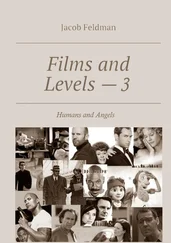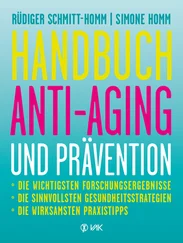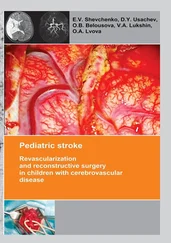Spending funds (energy) on conditioning the environment, that is, removing from habitat pathogenic microorganisms, toxic substances and reducing the levels of negative physical (radiation) and mental influences, humanity thereby provides the economy of free energy by organisms, which they spend on combating various pathogenic factors and metabolic chaos, thereby reducing the rate of pathological aging and increasing life expectancy.
The sharp increase in the average life expectancy in the twentieth century was provided by the work of infectious disease specialists, hygienists, parasitologists and epidemiologists, who defeated most of the infections. In the second half of the twentieth century, ecologists, clinical epidemiologists, toxicologists and technologists did it, overcoming the negative consequences of the first technical revolutions associated with chemical and physical pollution of the environment.
Hypoxia, reducing the activity of the main source of free energy – the mitochondrial system of oxidative phosphorylation, leads to a decrease in both phosphate and redox potential of cells. The unique property of hypoxia as the main pathogenic factor causing aging is the presence of numerous enhancers of its action. First, a decrease in oxygen concentration leads to a decrease in the rate of free energy production in the cell, the main mass carriers of which are ATP, NADH, NADPH and gradients of hydrogen, sodium, potassium and chlorine ions on cell membranes.
Cells contain more than 500 NADH- and NADPH-dependent enzymes (dehydrogenases), which, due to the free energy of oxidation of pyridine nucleotides, direct cell metabolism. Also in cells there are more than 200 ATP hydrolases that catalyze reactions that require the supply of free energy for their course. In the plasma membranes of various cells, there are energy-dependent translocases, which, due to the energy of the sodium cation gradient, provide the transport of a large list of metabolites into the cell against their concentration gradients.
Secondly, a decrease in the partial pressure of oxygen in organs and tissues leads to a decrease in the enzymatic activity of a number of oxidases. With a decrease in the activity of even one of the oxidases, important metabolic consequences arise in almost all organs and tissues.
A decrease in the activity of such a huge amount of enzymes under conditions of hypoxia leads to the most catastrophic consequences for cells, causing their death and death of the body.
At the physiological level, with aging, there is also a decrease in the production capacity of carriers of free energy due to a decrease in the supply of oxygen to organs and tissues, due to a decrease in the functions of the respiratory and cardiovascular systems.
The situation is aggravated by the fact that the carriers of free energy and their derivatives (cyclic AMP, cyclic GMP, GTP, CoA, FAD, NAD +) are key regulators of metabolism and cells and the body as a whole.
A decrease in the concentration of ATP and NAD(P)H leads to a decrease in the concentration, including nucleotides – substrates for the synthesis of nucleic acids (RNA and DNA): GTP, CTP, UTP, deoxy-ATP, deoxy-GTP, deoxy-CTP and deoxy-TTP.
There is no more toxic and operatively acting pathogenic factor than oxygen deficiency in the body due to the presence of such a large number of enhancers and distributors of its pathogenic effect on cell metabolism.
The whole history of oxygen life takes place under the sign of the economical consumption of always scarce oxygen, at all levels of the organization.
An important mechanism for this saving is the creation of oxygen reserves, especially in intensively functioning tissues and organs. The central nervous system, which is the most powerful and most intensive consumer of oxygen (per gram of mass per unit of time) as the main energy carrier, uses glucose, a semi-oxidized product containing its own oxygen. Glial cells that perform auxiliary functions contain glycogen, which also allows them to conserve oxygen, which is necessary for the functioning of neurons. I will dwell on other mechanisms for saving oxygen later.
I will list some of the main primary consequences of hypoxia for cells and the body as a whole.
1. Activation of an energy-dependent, regulated process of programmed cell death – apoptosis, which is safe for the surrounding tissues and for the organism as a whole, as a result of external influences. Apoptosis is not self-destruction of a cell, but it killing by external factors, in the extreme case, apoptosis can be considered as forcing cells to commit suicide by external factors: – the main physiological – cortisol (circadian rhythm), which with age increasingly becomes pathological (age-dependent growth basal level of cortisol and distress), and the main pathological one – hypoxia.
There is not enough oxygen for the simultaneous work of all cells of the body, it is necessary to save the “most valuable” ones, getting rid of ineffective cells for the survival of the body under hypoxic conditions, and also get rid of cells that may be restored from stem cells. Cascade mechanisms of the sequential elimination of cell components in a certain order require the expenditure of free energy in the form of ATP hydrolysis (for example, ubiquitin).
1.1. Activation of the production of free oxygen radicals by the respiratory chain of dying mitochondria. Free radicals of oxygen (* OH) and nitrogen (* NO), possessing high values of the oxidative potential, as well as ATP and NAD(P)H are mass carriers of free energy and are involved in the normal energy metabolism of cells. Free oxygen radicals generated by dying mitochondria are products of cell apoptosis, but not vice versa, as is often found in the literature.
It is the oxygen deficiency that leads to a network of events ending in apoptosis: – slowing down of the transport of electrons along the respiratory chain; – a decrease in the electrochemical potential difference of hydrogen ions on the inner mitochondrial membrane; – swelling of mitochondria with disruption of the integrity of the outer mitochondrial membrane; – exit from the intermembrane space into the cytoplasm of cytochrome C, which leads to disconnection from the respiratory chain of cytochrome oxidase and to the termination of direct transfer of electrons to oxygen (disconnection of cytochrome oxidase from the respiratory chain is an elegant evolutionary device that excludes the possibility of senseless and therefore harmful “eating” oxygen that is already deficient under conditions of hypoxia); – activation of the reverse transfer of electrons (against the redox potential of the electron carriers of the respiratory chain) entering the respiratory chain from dehydrogenases of the second conjugation point; – increasing the concentration of the reaction product of one-electron reduction of Coenzyme Q; – chemical reaction of oxygen with the Coenzyme Q radical, leading to an increase in the concentration of free oxygen radicals.
1.2. The main results of the impact of free oxygen radicals generated by dying mitochondria. The most important result of the action of free oxygen radicals is the chemical modification of mitochondrial DNA, which is surrounded on all sides by outgrowths of the inner membrane (cristae), in which the enzymes of the respiratory chain are localized. The number of DNA copies in mitochondria reaches 10, and the number of mitochondrial DNA copies per cell is several tens of thousands due to the large number of mitochondria in it.
The main function of free oxygen radicals generated by the respiratory chain of mitochondria of cells that have entered apoptosis, which is positive for the body, is the covalent modification of mitochondrial DNA and mitochondrial enzymes of its duplication. The meaning of these processes is the inactivation or neutralization of mitochondrial DNA, which is in origin and structure (without introns and without histones) bacterial DNA, capable of integrating into cellular DNA and thereby facilitating cell transformation [20].
Читать дальше












